Slow Roasted Tomatoes + Arugula-Tarragon Pesto over Socca
Chickpea flour has to be one of my favourite gluten-free flours out there. It has a lot of character (don’t even try tasting it raw, by the way) but it is, at the same time, very versatile. I make crêpes with it, savoury pancakes, use it in small amounts in cake batters (its high protein content mimics that of eggs, making it the perfect egg replacer) and many other preparations.
It wasn’t long ago that I’ve heard of socca, a chickpea flatbread typical of Nice, France. I came across a recipe for it in Ottolenghi’s Plenty, but haven’t tried it out as it called for egg whites. However, and after some research on the internet, I found out that most socca’s recipes don’t use eggs at all, requiring only three basic ingredients (chickpea flour, water and salt) and, optionally, a few dried herbs and olive oil. In this recipe, I used za’atar to flavour the batter because it goes well with the pesto and all, but you could definitely build different flavour profiles by adding different spices and herbs.
Regarding the slow roasted tomatoes: I quite like raw tomatoes, but I like them even more when slow roasted. They’re sweet and tangy at the same time and can totally transform an otherwise boring leafy salad into something out of this world.
The recipe(s) for the slow roasted tomatoes and the pesto make way more than what you will need for this particular dish but that’s the point, really, so that you have plenty to play around and use in different meals (salads, sandwiches, and so on).
Slow Roasted Tomatoes + Arugula-Tarragon Pesto over Socca
(serves 4 to 6)
slow roasted tomatoes:
1 kg / 15 medium sized vine ripened tomatoes, quartered
2 teaspoons salt
1 tablespoon olive oil
1 tablespoon balsamic vinegar
4 garlic cloves, lightly crushed
arugula-tarragon pesto:
40 g / 1/3 cup laminated almonds, preferably toasted
30 g / ½ cup packed arugula
6 g / ¼ cup packed tarragon
1 teaspoon salt
1 garlic clove, minced
2 tablespoons lemon juice
60 ml / 1/3 cup olive oil
socca:
130 g / 1 cup chickpea flour
1/2 teaspoon salt
1 ½ teaspoons za’atar
250 ml / 1 cup water
1 teaspoon olive oil, to grease the pan
extra arugula and silvered almonds, to assemble
Pre-heat the oven to 140 C / 284 F. Line a large baking tray with greaseproof paper. Add the tomatoes, salt, olive oil, balsamic vinegar and garlic to a bowl and mix to combine. Arrange the tomatoes, cut side up, on the baking tray and slow roast for 1 ½ to 2 hours. They’re done when wilted and lightly brown around the edges.
For the pesto, finely chop, separately, the almonds, arugula and tarragon. Mix everything together in a bowl and add the salt, garlic clove, lemon juice and olive oil. Mix well to combine. Have a taste and adjust the seasonings if needed be. Alternatively, and instead of chopping up the ingredients by hand, you can use a food processor to blend them up.
Raise the oven temperature to 200 C / 390 F.
Sift the chickpea flour, salt and za’atar to a bowl. Slowly pour in the water, whisking vigorously to avoid any lumps. Let the batter sit, covered, for 30 minutes to 1 hour at room temperature.
In the meantime, grease one 25 cm / 10 inch round baking dish with olive oil and put it in the middle third of the oven for at least 10 minutes. After that time take, very carefully, the pan out of the oven and pour the batter into it. Return the pan to the oven for 20-25 minutes, or until the chickpea pancake is golden brown on top. You can finish it (as I did) on the broiler for the last 5 minutes of cooking to encourage even browning.
To assemble, cut the socca into 4 or 6 equal slices. Spread the pesto on each of the slices, add a generous amount of arugula on top as well as 2 to 3 tomato quarters. Drizzle a bit more pesto on top of the tomatoes and finish off with plenty of toasted silvered almonds.
Snow Pea and Roasted Almond Pesto
The other day I got a big bag full of spring goods from my aunt’s garden – it had snow peas, pea pods and fava beans (also still in their pods) in there. I sat down in front of the tv for a good hour peeling the pea and fava pods, and by the end of it there was this huge pile of green pods and a smaller one with the actual edible produce (that was eaten in the next two or three days). However, the bag also contained a considerable amount of snow peas (and, thankfully, those do not need to be shelled), and even though I love eating them the simplest way possible – sautéed for just a few minutes with garlic and olive oil – I felt I needed to do something a little bit different with them just for the sake of variety. And so this pesto recipe was born.
It’s as easy as it gets – mix a couple ingredients in the food processor, purée, season and enjoy. I prefer my almonds toasted (I think they’re more flavourful that way), but if you don’t want to turn on the oven just to toast them, you could use them in their natural state and still end up with a tasty, somewhat unusual, pesto. I brought some of it to a dinner party and we ate it over bread, crackers and even as a dipping sauce/paste to spring rolls but, really, you could do a whole lot of things with it – it’s excellent as pasta sauce, for instance.
Oh and last, but not the least: this blog is now on facebook. Go over there if you want to follow it as it is going to be updated regularly.
Snow Pea and Roasted Almond Pesto
(makes, roughly, 1 1/2 cups)
200 g snow peas
1/3 cup / 55 g almonds with their skins on
zest and juice of one medium lemon
½ cup / 125 ml extra virgin olive oil
½ plus 1/8 teaspoons sea salt
2 garlic cloves
a few sprigs of lemon thyme
Pre-heat the oven to 180ºc /350 F.
Rinse the snow peas and, while trimming their ends, slide your finger along one side to remove any tough strings. Coarsely chop them.
Arrange the almonds evenly on a baking tray. Roast them for 8 to 10 minutes or until golden brown. Set them aside to cool. When the almonds are cool enough to be handled, chop them coarsely.
Put all the chopped snow peas and almonds in the bowl of a food processor along with the other ingredients. Process for 1 to 2 minutes until smooth. Have a taste and adjust the seasonings if needed. Transfer the pesto to a large bowl and store in the fridge. Use within 2-3 days.
Seasonal Minestrone
Surprisingly enough, yesterday - with an outside temperature of 35 degrees -, I found myself sneezing and coughing all the time. I knew I was about to get sick, and started craving a comforting soup and toasted bread, no matter how hot was outside and how sweaty I’d get right after eating those foods. I had some seasonal veggies sitting on the fridge that would make for a good pot of soup, and it didn’t take me long to get my hands at preparing them (peeling, slicing and all), although I must confess I was about to give up a few times during the process and go for a nap. I’m usually very determined when it comes to satisfy my cravings, and the idea that, in the end, I’d get a huge pot of soup that would make my lunches and dinners for the rest of the week, worked out as the main motivation factor.
I ended up following (although not stricktly) Jamie Oliver’s recipe for a Spring and Summer Minestrone, that I’ve bookmarked from his book Jamie Does. I adapted the recipe to fit what I had on hand, and I guess that’s the spirit of minestrone anyway – use whatever vegetables are in season and that would go well together for a hearty, filling soup. The original recipe for the pesto calls for Parmesan, but as I don’t do cheese, I’ve just ommited this ingredient and had not problems at all. Just bare in mind Parmeasan is quite salty, so use a good pinch of salt in the pesto to work as a substitute and to balance things out.
Seasonal Minestrone
(serves 6)
200 grams carrots
300 grams zucchini
3 garlic cloves
1 large leek
1 large tomato
a bunch of parsley
2 handfuls watercress
1 cup frozen peas
150 grams short pasta
1 small cabbage
2 liters good tasting stock
salt and pepper
olive oil
for the pesto:
a bunch of basil
60 grams pinenuts
3 tablespoons olive oil
2 small garlic cloves, peeled and thinly sliced
a pinch of salt
1. Start by preparing the carrots and zucchini: slice each vegetable into quarters, and then slice each quarter into cubes of aproximadetely 0,8 to 1 centimeter thick.
2. Then, thinly slice the leek and garlic cloves.
3. Heat your largest pan on medium heat, add a few glugs of olive oil, the leek, garlic, carrots and zucchini. Stir and cook for about 5 minutes.
4. Roughly chop the tomato, parsley, and watercress. Slice the cabbage into halves, remove the hard core, and finely shred each half. Add the veggies to the pan.
4. Now, add the peas, pour in the stock, and bring to a boil. Once boiling, add the pasta and salt and pepper to taste. Lower the heat to low-medium, and let the soup simmer for about 10 minutes, or until the pasta is cooked. Taste and adjust the seasonings if needed.
5. To make the pesto, add the basil, pinenuts, garlic cloves, a pinch of salt and the olive oil to a food processor, and pulse everything for 1 minute, or until the mixture starts coming together into a paste, but isn’t totally smooth. Have a taste and adjust the flavors (adding a bit more of one or another) if needed, bearing in mind you want to find a balance between all the ingredients.
6. Divide the soup among deep plates and top each serving with a good tablespoon of pesto. Drizzle over a little olive oil and add some fresh basil leaves.
recipe inspired by Jamie Does, published by Penguin Books
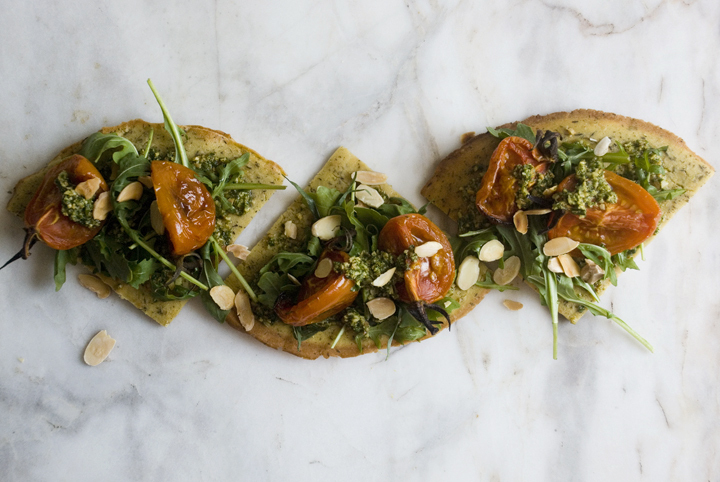
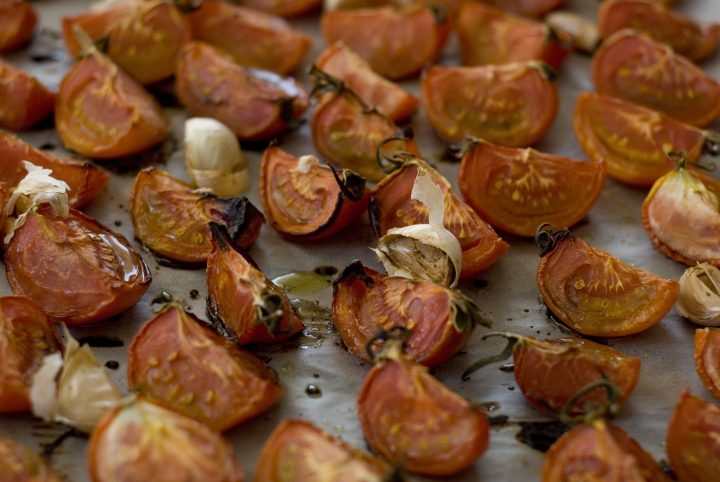
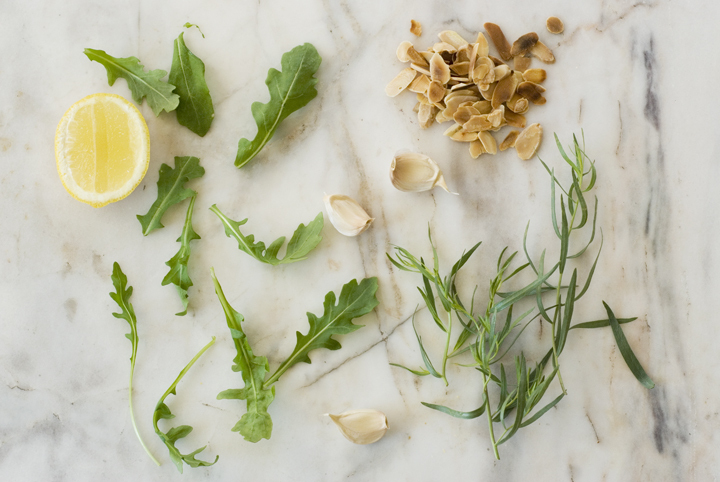
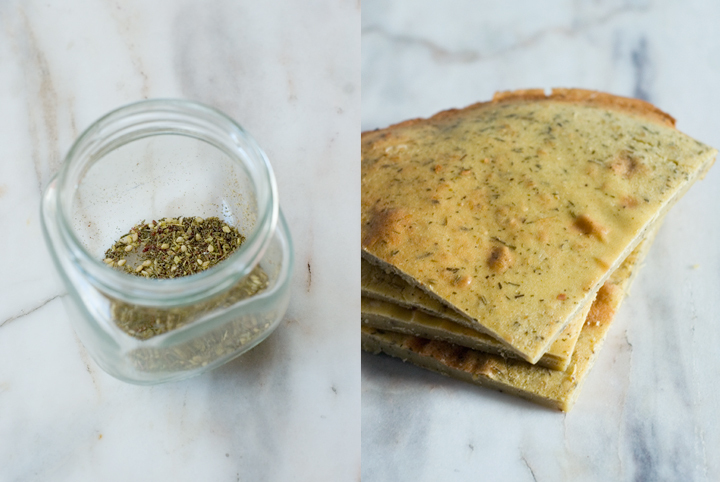
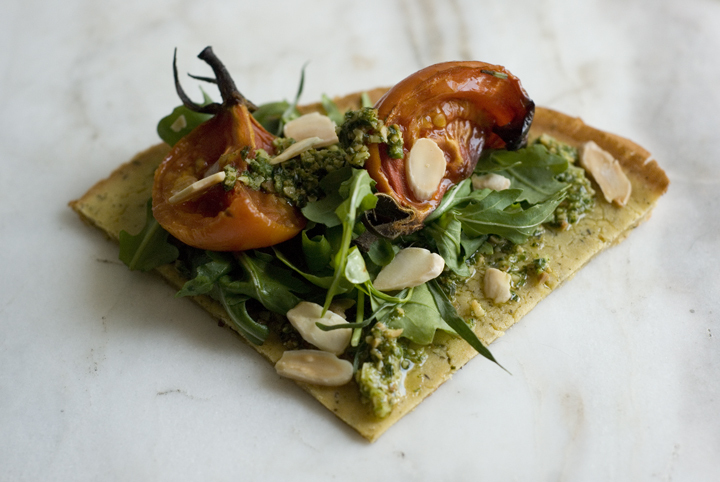
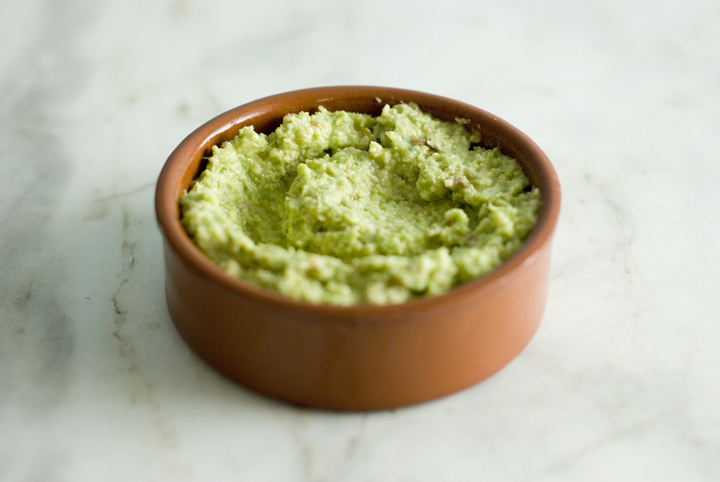


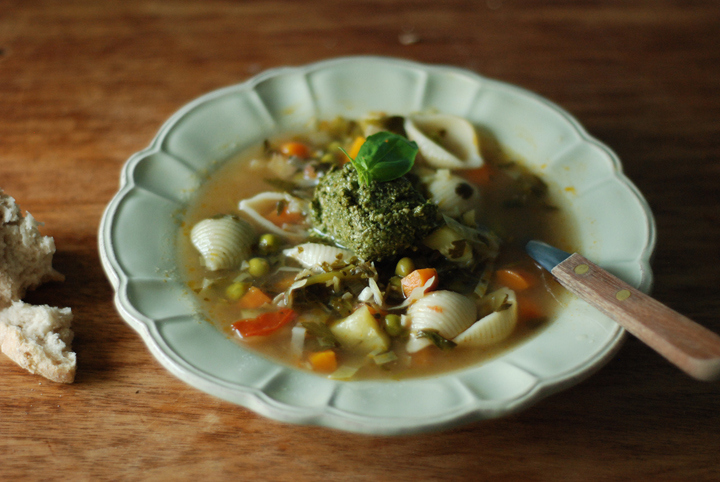
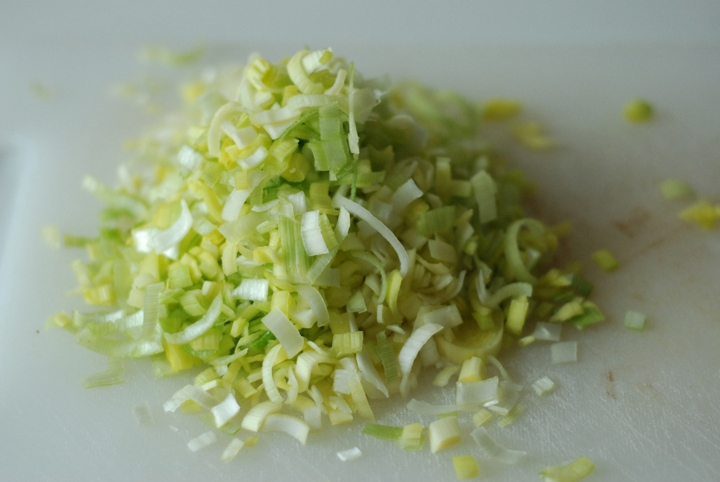
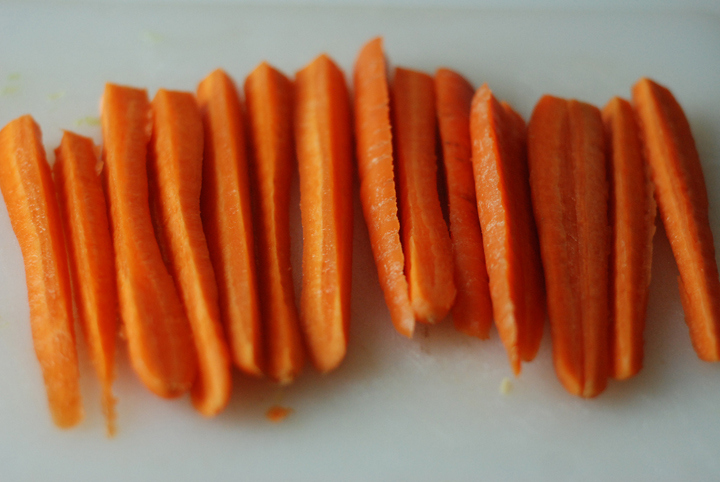

2 comments